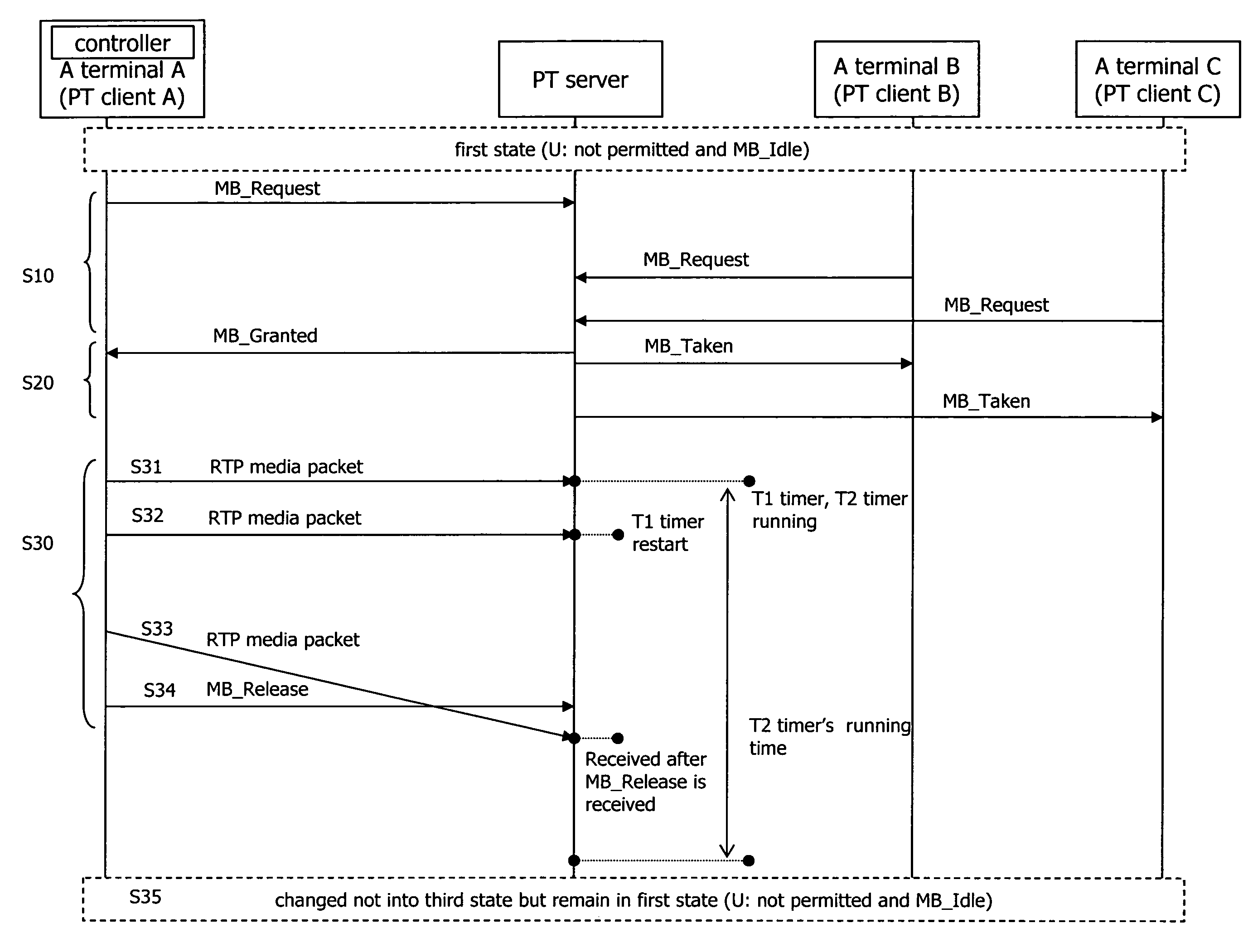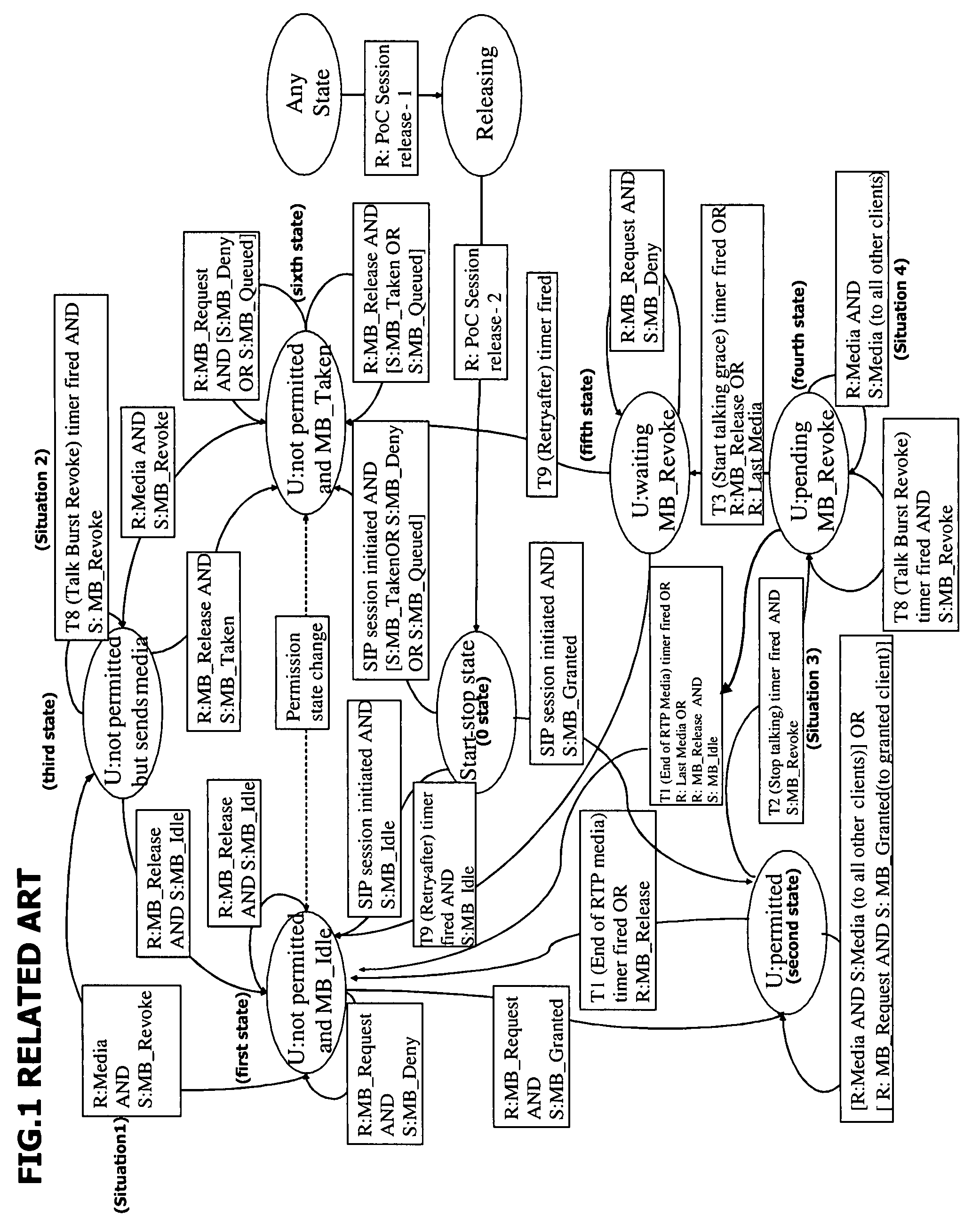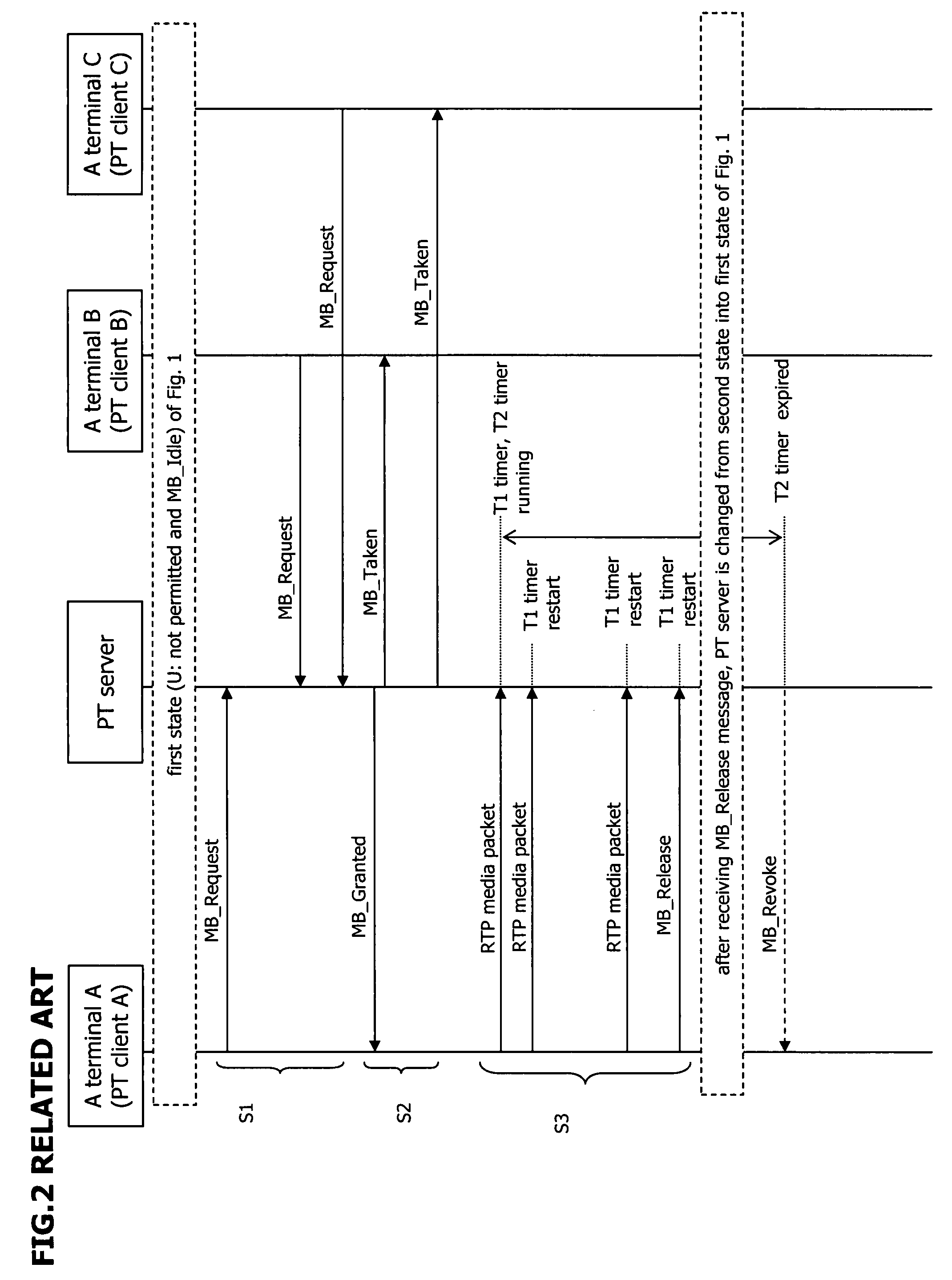Method and device for controlling floor in push to service
a technology of floor control and push to service, which is applied in the direction of wireless commuication services, data switching networks, broadcast service distribution, etc., can solve the problems of current state of pt server with respect to terminal, pt server may not be able to return to the first, and delay in transit, etc., to achieve effective media burst control techniques
- Summary
- Abstract
- Description
- Claims
- Application Information
AI Technical Summary
Benefits of technology
Problems solved by technology
Method used
Image
Examples
first embodiment
[0062]FIG. 3 is a signal flowchart illustrating a media burst control in accordance with this disclosure.
[0063]Hereinafter, description is made with reference to FIGS. 1 and 3. Here, it is assumed that a SIP session is initiated in the zero state of the PT server in FIG. 1, and then the PT sever is in the first state by sending a MB_Idle message to each terminal. That is, each terminal is in a state in which they can request a media burst authority (floor or a permission to send media burst) to the PT server. However, description is given here on the assumption that a terminal A has been granted the permission to send a media burst from the PT server, only as an example.
[0064]Each of terminals A, B and C (PT client devices) sends a message for requesting a permission to send a media burst (e.g., MB_Request) to the PT server (S10). When the PT server has decided to grant a permission to send a media burst to the terminal A, it sends to the terminal A a granted message (e.g., MB_Grant...
second embodiment
[0072]In the present invention as shown, e.g., in FIG. 4, even if the MB_Release message from the terminal A has been received by the PT server before receiving the last RTP media packet or at least one RTP media packet which may not be the last RTP media packet, which was sent earlier than the MB_Release message, the state of the PT server is not transited (changed) from the second state into the first state, but rather the second state of the PT server still stays with respect to the terminal A. This indicates that the PT server waits to receive the last RTP media packet (or any other RTP media packet(s)) from the terminal A until the T2 timer expires. In FIG. 4, each RTP media packet may have the sequence number so the PT server can wait for the last packet in view of the ‘sequence number of last packet’ information contained in the received MB_Release message.
[0073]Also, the second embodiment of FIG. 4 illustrates that, although the series of RTP media packets (preferably having...
PUM
 Login to View More
Login to View More Abstract
Description
Claims
Application Information
 Login to View More
Login to View More - R&D
- Intellectual Property
- Life Sciences
- Materials
- Tech Scout
- Unparalleled Data Quality
- Higher Quality Content
- 60% Fewer Hallucinations
Browse by: Latest US Patents, China's latest patents, Technical Efficacy Thesaurus, Application Domain, Technology Topic, Popular Technical Reports.
© 2025 PatSnap. All rights reserved.Legal|Privacy policy|Modern Slavery Act Transparency Statement|Sitemap|About US| Contact US: help@patsnap.com



